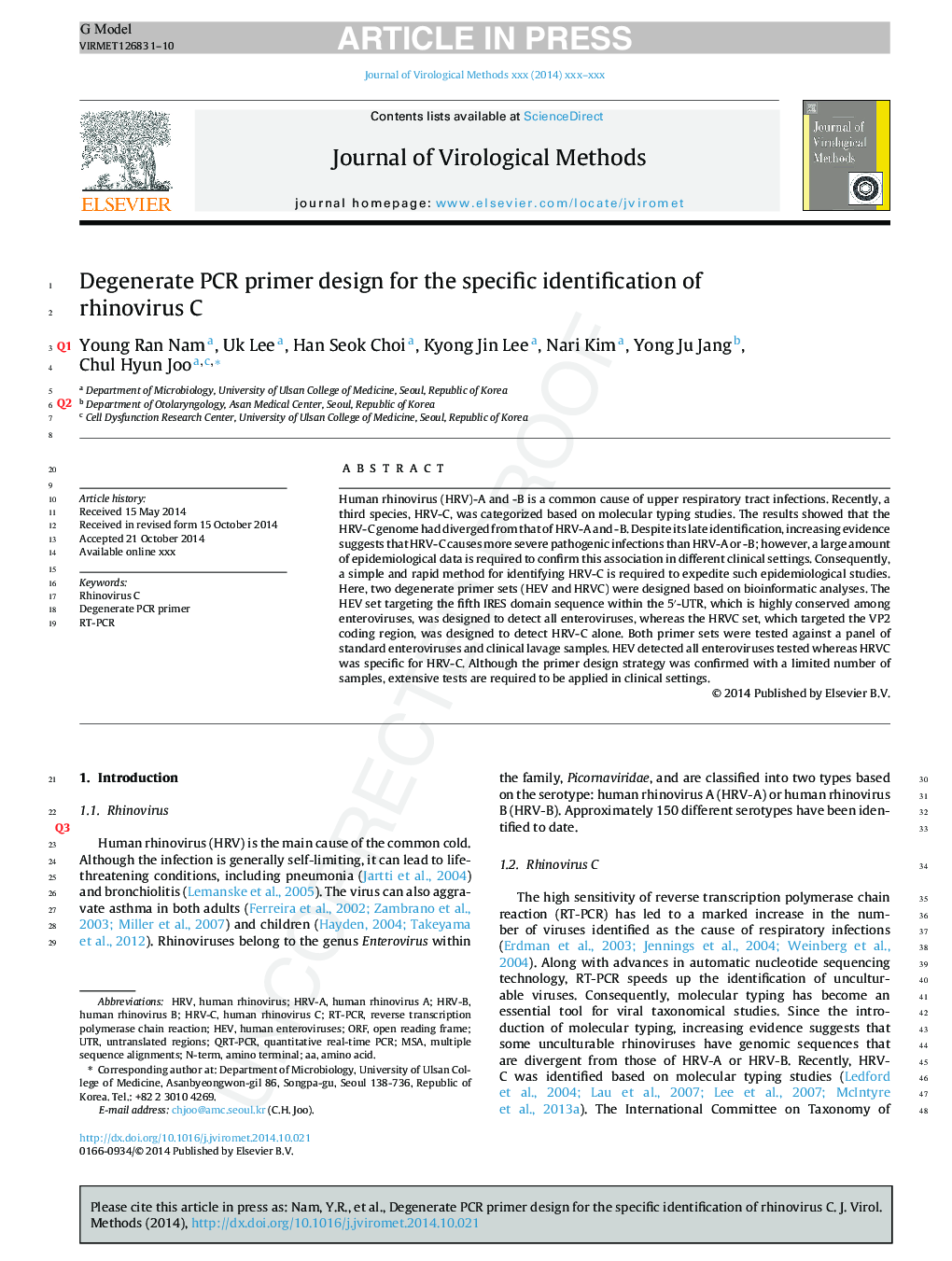| Article ID | Journal | Published Year | Pages | File Type |
|---|---|---|---|---|
| 6133395 | Journal of Virological Methods | 2015 | 10 Pages |
Abstract
Human rhinovirus (HRV)-A and -B is a common cause of upper respiratory tract infections. Recently, a third species, HRV-C, was categorized based on molecular typing studies. The results showed that the HRV-C genome had diverged from that of HRV-A and -B. Despite its late identification, increasing evidence suggests that HRV-C causes more severe pathogenic infections than HRV-A or -B; however, a large amount of epidemiological data is required to confirm this association in different clinical settings. Consequently, a simple and rapid method for identifying HRV-C is required to expedite such epidemiological studies. Here, two degenerate primer sets (HEV and HRVC) were designed based on bioinformatic analyses. The HEV set targeting the fifth IRES domain sequence within the 5â²-UTR, which is highly conserved among enteroviruses, was designed to detect all enteroviruses, whereas the HRVC set, which targeted the VP2 coding region, was designed to detect HRV-C alone. Both primer sets were tested against a panel of standard enteroviruses and clinical lavage samples. HEV detected all enteroviruses tested whereas HRVC was specific for HRV-C. Although the primer design strategy was confirmed with a limited number of samples, extensive tests are required to be applied in clinical settings.
Keywords
Related Topics
Life Sciences
Immunology and Microbiology
Virology
Authors
Young Ran Nam, Uk Lee, Han Seok Choi, Kyoung Jin Lee, Nari Kim, Yong Ju Jang, Chul Hyun Joo,
